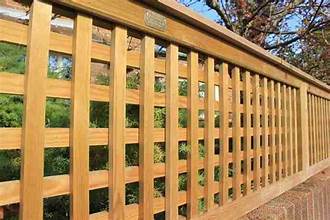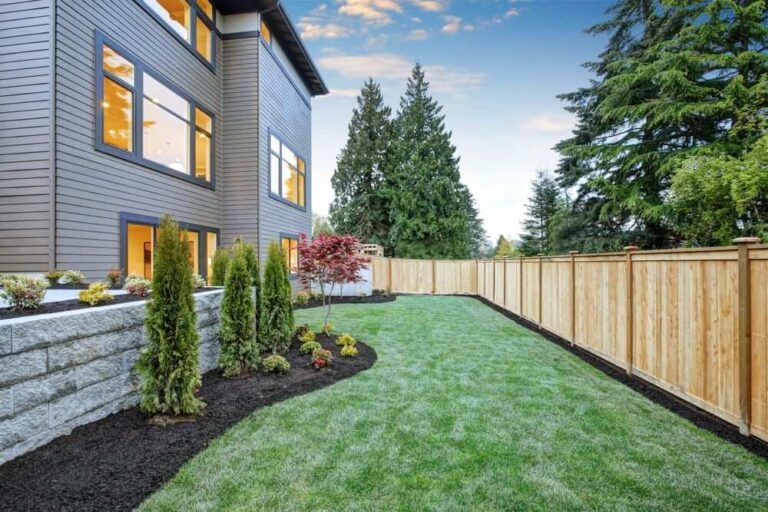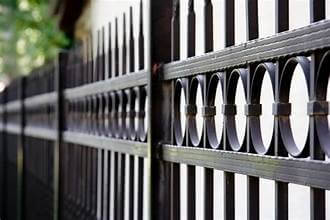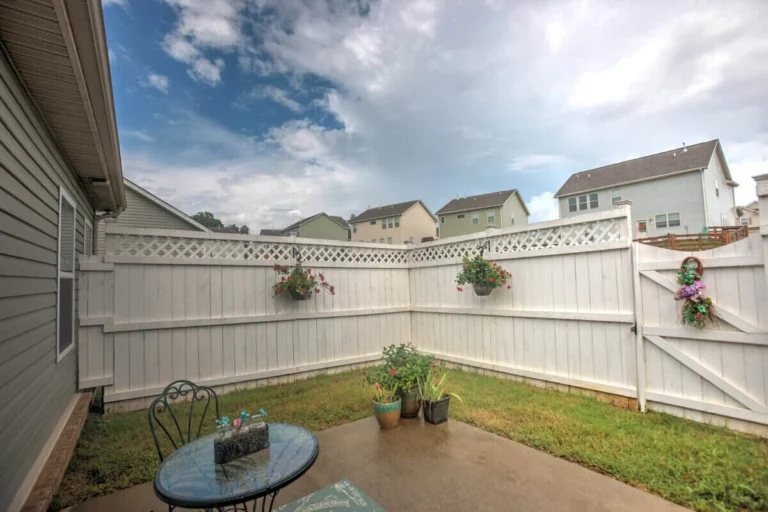When choosing fencing for windy areas, consider options like steel or aluminum for durability and strength. These materials offer better resistance to strong winds, making them ideal choices for windy locations.
Additionally, you can opt for a design with gaps to reduce wind resistance, such as a picket or lattice style.
It’s crucial to prioritize durability, wind resistance, and low maintenance when selecting fencing for windy areas.
By considering these factors, you can choose a fencing option that not only complements your property aesthetically but also withstands the challenges of a windy climate.
Keep in mind that investing in a quality, wind-resistant fence will provide long-term benefits for your property.

Factors Impacting Fencing In Windy Areas
The material and design of fences are crucial, especially in windy conditions.
San Mateo Fencing Experts offer high-quality, weather-resistant materials and designs like solid panels and slatted patterns that are both durable and aesthetically pleasing.
Their products ensure longevity and stability even in gusty weather, making them ideal for such areas. See our services in detail.
Wind Speed And Direction
Wind speed and direction play a significant role in determining the most appropriate type of fencing for windy areas.
High wind speeds can exert immense pressure on fencing, potentially causing damage or even collapse.
Additionally, wind direction can affect how the force is applied to the fence.
Understanding the prevailing wind patterns in your area will help in choosing a fencing solution that can withstand the specific wind conditions.
Soil And Terrain Considerations
Soil and terrain can also impact the effectiveness of fencing in windy areas.
The type of soil can influence how well the fence posts anchor into the ground, and rocky or uneven terrain may require specialized installation methods to ensure the fence remains stable.
Considering these factors is essential to prevent potential instability or failure of the fencing structure.
Choosing The Right Type Of Fencing
When choosing fencing for windy areas, it is crucial to consider the right type of materials, height, and solidity to ensure the fence can withstand the elements.
Choosing the right type of fencing is essential in providing the necessary protection and durability against strong winds. Here are some important factors to consider:
Materials Resistant To Wind
Choosing materials that are specifically designed to resist strong winds is vital for windy areas.
Opt for durable materials such as metal, vinyl, or composite. These materials offer exceptional resistance to wind and are less likely to warp or break under pressure.
Metal fences, including aluminum and steel, are particularly resilient, while vinyl and composite materials provide both strength and low-maintenance durability.
Height And Solidity Considerations
When selecting the right fence for windy areas, consider the height and solidity of the fencing.
Taller fences with solid panels are more effective at blocking wind and reducing its force.
Solid panel fences, such as those made from wood or composite, act as barriers to prevent wind from passing through, reducing the likelihood of damage.
Maintaining And Upkeeping Wind-resistant Fencing
A crucial aspect of choosing fencing in windy areas is ensuring its proper maintenance and upkeep.
By regularly inspecting and repairing the fence, as well as considering additional supporting structures, you can enhance its wind resistance and durability.
Here are some essential tips for maintaining wind-resistant fencing:
Regular Inspection And Repair
Regular inspection and timely repairs are vital for preserving the integrity of wind-resistant fencing.
It’s important to conduct thorough assessments to identify any signs of damage, such as loose panels, bent posts, or weakened foundations.
Once identified, these issues should be promptly addressed to prevent further deterioration.
Implement a regular schedule for inspecting the fence, especially following severe weather events, to ensure its resilience against strong winds.
Additional Supporting Structures
Incorporating additional supporting structures can reinforce the wind resistance of the fence.
Installing vertical braces or diagonal supports can effectively distribute the force of the wind and minimize the risk of damage.
These added components provide extra stability and contribute to the overall strength of the fencing system.
Consider consulting with a professional to determine the most suitable supplementary structures based on the specific wind conditions in your area.

Frequently Asked Questions
How Can I Choose The Right Fencing For Windy Areas?
You should consider sturdy materials like vinyl or metal for better wind resistance. Consulting with a professional is also beneficial.
What Are Some Design Options For Wind-resistant Fencing?
Opt for slatted or mesh designs that allow wind to pass through. Avoid solid panels that can act as wind traps.
Is Professional Installation Necessary For Wind-resistant Fencing?
Yes, professional installation ensures proper anchoring and alignment for maximum wind resistance. It’s crucial for long-lasting and effective fencing in windy areas.
Conclusion
It’s essential to choose the right fencing for windy areas to ensure durability and strength.
By considering factors like material, design, and installation, you can protect your property effectively.
With the right fencing, you can maintain security and privacy while withstanding strong winds.
Make an informed choice to enhance your property’s safety and aesthetics.







